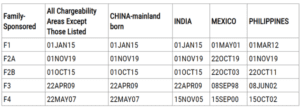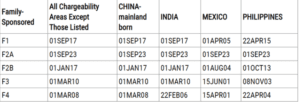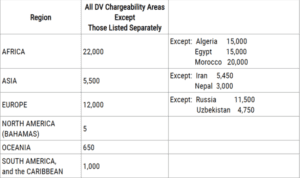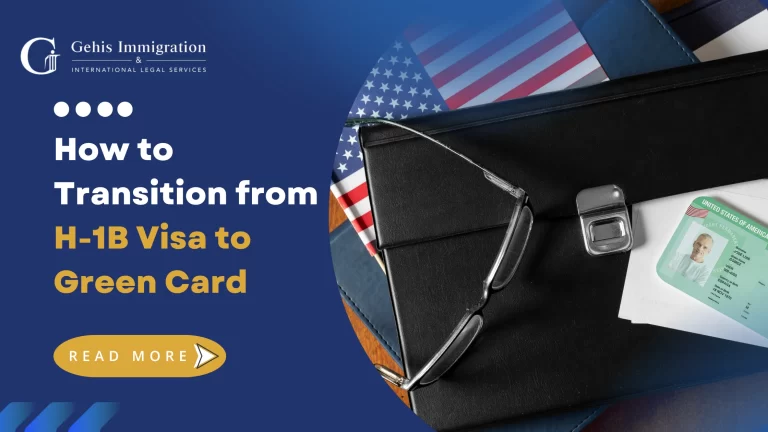VISA BULLETIN FOR JANUARY 2024
Introduction
The bulletin provides an overview of immigrant numbers available in January for “Final Action Dates,” which are the dates for applicants to submit required documentation to the National Visa Center. USCIS will indicate when to file a visa or an adjustment of status application based on these dates.
How to determine dates
USCIS transmits the list of eligible applicants for the numerically limited visa to the Department of State. Based on the priority dates, the allocation is made chronologically for the demand received up to December 4th.
The process is oversubscribed when there are many applications. The final action date is the priority date for the first applicant who could not reach the numerical limit. Supplemental requests could be added to the monthly limits. If there is an annual limit, the preference categories are unavailable.
Limit for 2024
Family-preference immigrants are limited to 226,000 for the fiscal year 2024. The global employment-based preference limit is 140,000 per country. The per-country limit on preferences is 7%, and the per-country limit on dependent areas is 2%.
The preferred immigrant is granted family-sponsored preferential visas in the order petitioned in the principal’s name. If they accompany or follow the principal, eligible immigrants are treated equally with spouses and children. Visa prorations apply for foreign states or dependent areas exceeding the per-country limit, including China-Mainland Born, India, Mexico, and the Philippines.
Family preference
Section 203(a) in the INA sets out the following preference classes for family-sponsored immigrant visas:
- Unmarried sons and daughters of US citizens (F1) – 23,400 and any number not required for the fourth preference.
- Spouses, children, and unmarried sons and daughters of green card holders (F2A and F2B) – 114, 200, and any number (if applicable) by which the global family preference level exceeds 226,000 with unused first preference numbers.
- Married sons and daughters of US citizens (F3) – 23,400, including any number not required by the first and second preferences.
- Brothers and sisters of adult US citizens (F4) – 65,000, including numbers not required for the first three preferences.
The final action dates are as follows:
F2A number (Exempt) is authorized for January to be issued to applicants from any country with a priority date earlier than 22 October 19. F2A number (subject) is authorized for per country limit issuance to applicants charged to all countries except Mexico with a priority date beginning 22 October 19 and an earlier date beginning 01 November 19. All Mexico F2A numbers are exempt from the per-country limit.
The family-preference visa filing dates are as follows:
The DV visas
Section 203(c) of the INA allows up to 55,000 immigrant visas each fiscal year to provide additional immigration opportunities for low-admission countries. The NACARA program will make up to 5,000 available visas, reducing the DV-2024 annual limit to approximately 54,850.
DV visas are divided among six geographic regions as follows:
Each country can receive up to seven percent of available diversity visas annually.
For January, immigrant numbers in the DV category are available to qualified DV-2024 applicants, chargeable to all regions/eligible countries.
Get help!
Immigration law is constantly changing, and keeping up with the latest updates can relieve stress. Immigration policy updates on visas can often be challenging to keep up with due to the frequent changes.
Having an experienced immigration lawyer as a close friend in your immigration process can be a sure way to stay ahead of the curve.
Gehi and Associates have an experienced team of immigration lawyers who are always up-to-date with the latest immigration laws and visa updates. Connect with us today!











